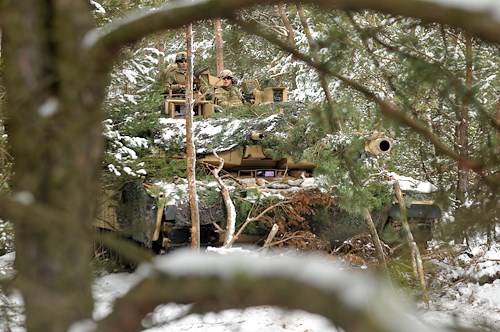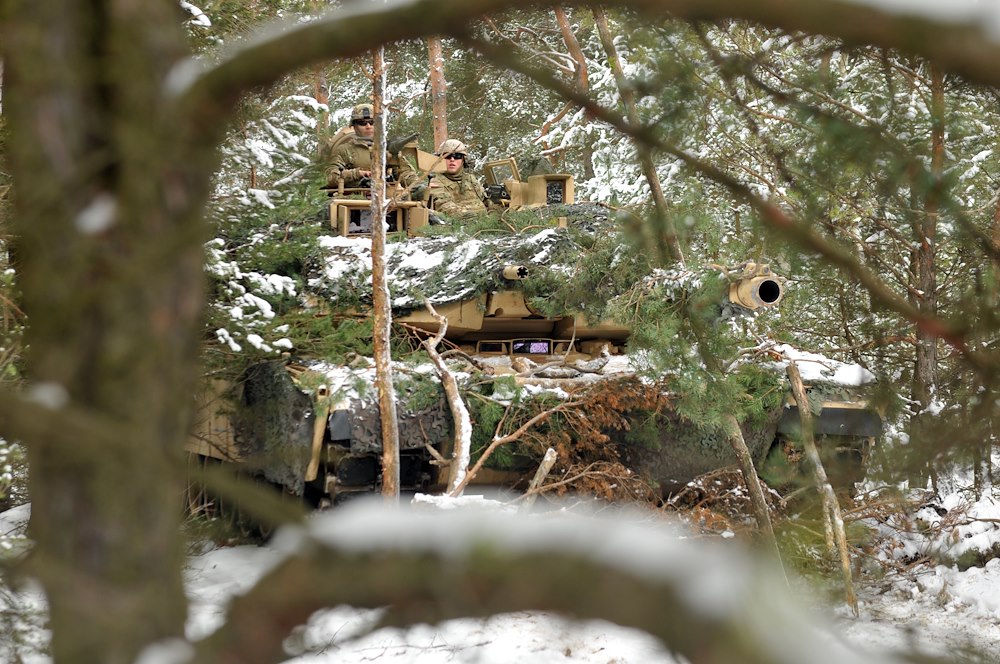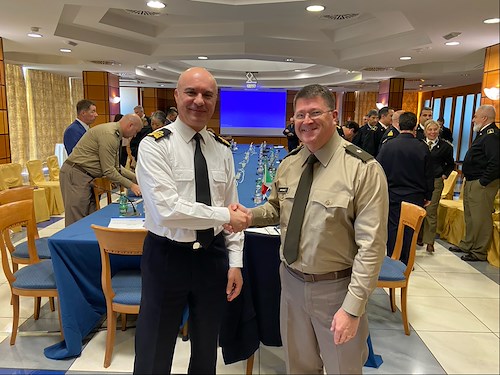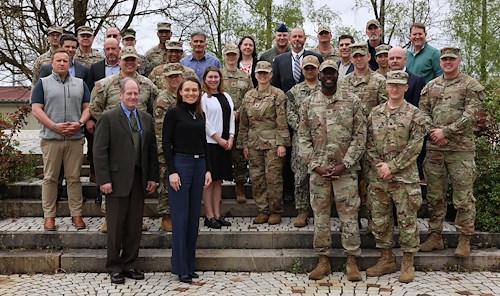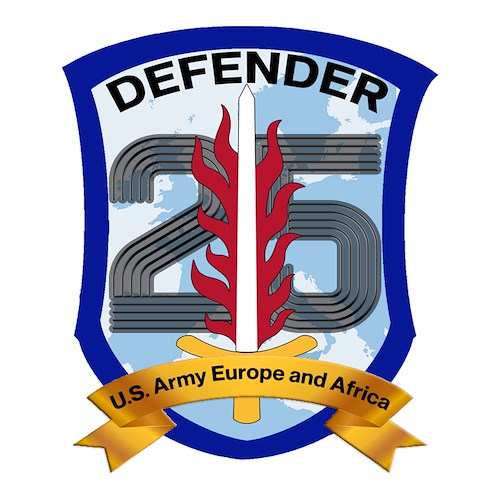Gallery contains 1 image
×
Photo 1 of 1
Soldiers adapt to surroundings in Poland
Soldiers assigned to 1st Battalion, 68th Armor Regiment, 3rd Armored Brigade, 4th Infantry Division sit in an M1 Abrams Tank after concealing it in wooded terrain, Jan 20, at Presidential Range in Swietozow, Poland. The vehicles and Soldiers arrived in Poland last week from Colorado Springs, Colorado as part of a nine-month deployment in support of Operation Atlantic Resolve. This rotation will enhance deterrence capabilities in the region, improve the U.S. ability to respond to potential crises and defend allies and partners in the European community. U.S. forces will focus on strengthening capabilities and sustaining readiness through bilateral and multinational training and exercises. (Photo by Staff Sgt. Elizabeth Tarr)
Photo by: Staff Sgt. Elizabeth Tarr
Now you see them and now you don’t. Learning how to conceal a 28-ton Bradley Fighting Vehicle, along with M1 Abrams Tanks in any type of terrain, takes a high-level of skill and proficiency to be flexible within your surroundings.
Whether they are training in a desert environment or the forested hills of Poland, the Soldiers assigned to 1st Battalion, 68th Armor Regiment, 3rd Armored Brigade, 4th Infantry Division trained on camouflaging several Bradley Fighting Vehicles and M1 Abram Tanks, Jan. 20, at Presidential Range in Swietozow, Poland.
“Today we’re here to proof the concept that, regardless of the color of the vehicle, with enough preparation and dedication we have the ability to camouflage in any scenery but specifically here in the forest of Western Poland,” said Capt. Edward Bachar, company commander for C. Company, 1st Battalion, 68th Armored Regiment.
According to Sgt. Cody Flodin, an infantryman assigned to 1-68, the initial step of camouflaging a vehicle is to place the vehicle in an assault position, and cover the vehicle with a camouflage net, which is a radar and laser scattering net that deters air and ground radar detection. Then he covers the vehicle using dead foliage from the forest floor to break up the visual outline of the vehicle. Once the vehicle is concealed, he places snow on the foliage to mimic the natural environment. During the process, he ensures all functions work properly on the vehicle.
“We need to have the ability to quickly move into a wooded area and not be able to be observed by any potential enemy,” said Bachar. “It is important that within approximately 15 minutes this Bradley was able to go from maneuvering in a large open area directly into the wood line and blend in with the local surroundings.”
The unit prepared for this mission during a 30-day training rotation at the National Training Center in Fort Erwin, California. According to Bachar, they had to learn to blend in to the surrounding area due to opposition forces and the enemy situation.
“Three months ago, we had to do the same thing in the desert with these vehicles and we did it phenomenally,” he said. “We have the ability to execute hide sites, assembly area operations, assault positions and remain undetected from the enemy. To be able to do the same thing in a completely different environment really shows the proficiency of the crew themselves to camouflage their Bradley Fighting Vehicles and tanks.”
The Bradley's and tanks are slated to be painted in green foliage camouflage in a few months, making it a little easier for the Soldiers of Iron Brigade to conceal themselves. In the meantime they will continue to train and hone their skills.
“Field craft is a priority, really in anything, from a dismounted squad being able to blend in to its surroundings to a Bradley fighting vehicle,” said Bachar. “So, we will emphasize field craft camouflage and the ability to blend in to your immediate surroundings in every training exercise. This [today's training] is just a proof of concept and the initial training to ensure we have the ability to do it. From here on out we’re going to continue to get better in our ability to do exactly that.”
The Iron Brigade is here as the first rotation of back-to-back armored brigades in Europe in support of Atlantic Resolve. This rotation will enhance deterrence capabilities in the region, improve the U.S. ability to respond to potential crises and defend allies and partners in the European community. U.S. forces will focus on strengthening capabilities and sustaining readiness through bilateral and multinational training and exercises.

